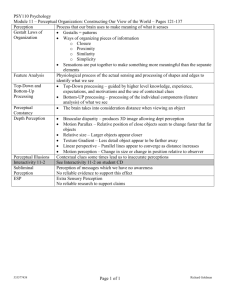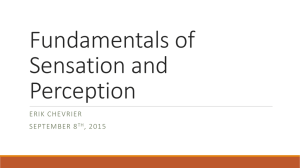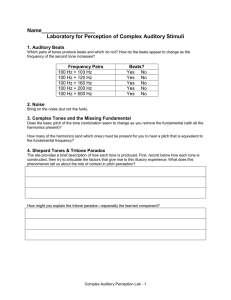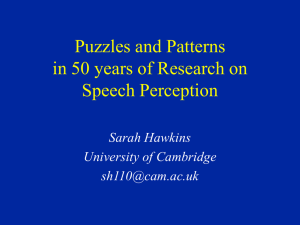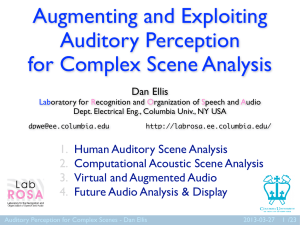U5 Standards and Vocab
advertisement
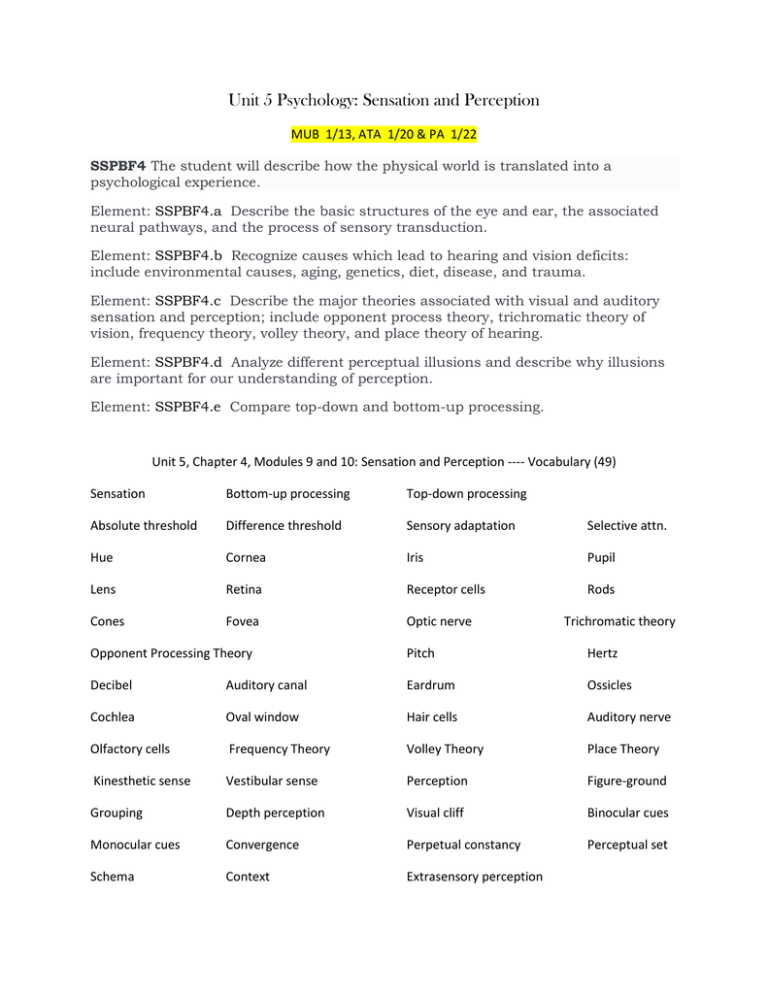
Unit 5 Psychology: Sensation and Perception MUB 1/13, ATA 1/20 & PA 1/22 SSPBF4 The student will describe how the physical world is translated into a psychological experience. Element: SSPBF4.a Describe the basic structures of the eye and ear, the associated neural pathways, and the process of sensory transduction. Element: SSPBF4.b Recognize causes which lead to hearing and vision deficits: include environmental causes, aging, genetics, diet, disease, and trauma. Element: SSPBF4.c Describe the major theories associated with visual and auditory sensation and perception; include opponent process theory, trichromatic theory of vision, frequency theory, volley theory, and place theory of hearing. Element: SSPBF4.d Analyze different perceptual illusions and describe why illusions are important for our understanding of perception. Element: SSPBF4.e Compare top-down and bottom-up processing. Unit 5, Chapter 4, Modules 9 and 10: Sensation and Perception ---- Vocabulary (49) Sensation Bottom-up processing Top-down processing Absolute threshold Difference threshold Sensory adaptation Selective attn. Hue Cornea Iris Pupil Lens Retina Receptor cells Rods Cones Fovea Optic nerve Trichromatic theory Opponent Processing Theory Pitch Hertz Decibel Auditory canal Eardrum Ossicles Cochlea Oval window Hair cells Auditory nerve Olfactory cells Frequency Theory Volley Theory Place Theory Kinesthetic sense Vestibular sense Perception Figure-ground Grouping Depth perception Visual cliff Binocular cues Monocular cues Convergence Perpetual constancy Perceptual set Schema Context Extrasensory perception





